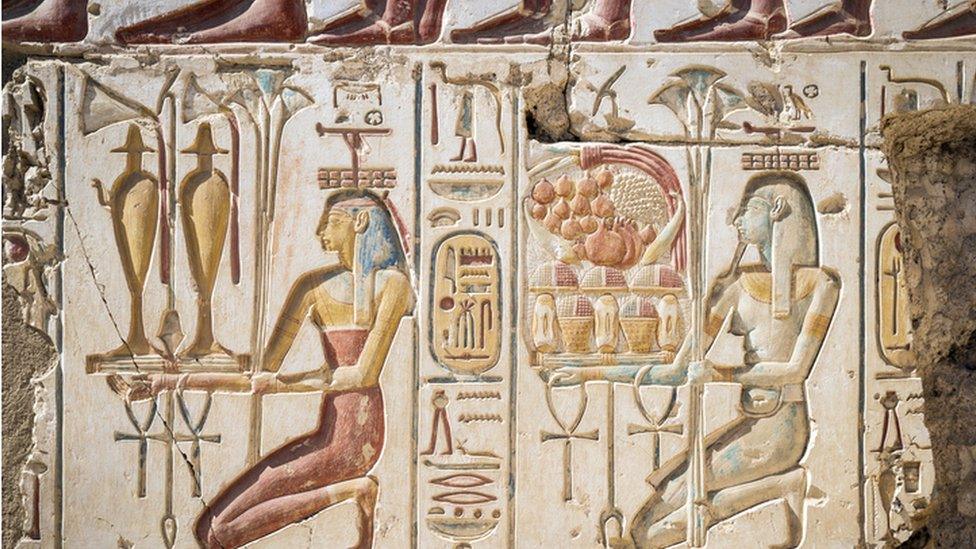New exhibition celebrating ancient Egyptian hieroglyphics to open
- Published
- comments

The British Museum in London is launching a new exhibition celebrating 200 years since ancient Egyptian hieroglyphics were translated.
Hieroglyphics is an ancient Egyptian language which uses pictures and symbols to describe objects and sounds.
It is one of the earliest known writing systems, and was used from around 3000 BC (that's around 5,000 years ago!).
More than 240 objects will be on display as part of the exhibition, including the famous Rosetta Stone, which played a very important part in helping historians to understand the ancient language, and learn more about the lives of ancient Egyptian people.
"We are celebrating 200 years of decipherment of hieroglyphs this year, which happened in 1822." said the museum's Curator, Ilona Regulski.
"We thought it was the opportune moment to celebrate this very important achievement and to also share the latest research on Egyptian writing." she said.
What is the Rosetta stone, and why was it important?
The Rosetta stone is a hugely important artefact
The Rosetta stone was discovered in 1799 AD.
Measuring in at just over a metre tall the stone is covered in an official written message (also known as a decree) about King Ptolemy V, which is translated into three different languages: hieroglyphs, Demotic (everyday ancient Egyptian language) and ancient Greek.
As Greek was a language that was understood by lots of people, the ancient hieroglyphs could then be translated into other more modern European languages, like English.
So the Rosetta stone was the key to the hieroglyphic code!
The stone has been in Britain since 1801, but Egypt has been officially asking for its return for the last 19 years.
There are more than 700 unique hieroglyphic symbols in the ancient Egyptian alphabet - we only have 26 letters in the English alphabet!
Senior Conservator Stephanie Vasiliou and Conservation Student Shoun Obana cleaning "The Enchanted Basin"
Some of the other objects that will be on display during the exhibition, include an "enchanted basin", a 3,000-year-old illustrated Book of the Dead, and the mummy bandage of Aberuait, which has never been displayed in the UK before.
The "enchanted basin" - is a large black granite sarcophagus from around 600 BCE.
It is covered in hieroglyphs that were believed to have magical powers, and bathing in the basin was thought to offer relief from the 'torments of love'!
- Published25 January 2019
- Published30 September 2021
- Published29 December 2021
